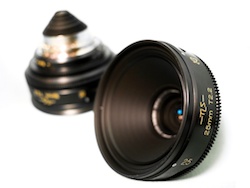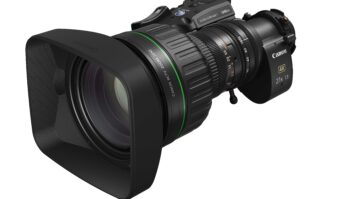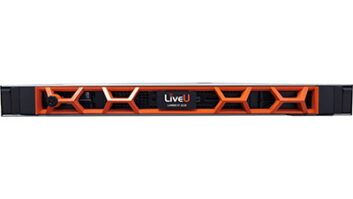
The classic Cooke Speed Panchro, the first high-speed cinema lens that enabled producers of the early talkies to ditch the noisy lighting of the time, is getting an upgrade for the 4K era.
True Lens Services has started a Speed Panchro conversion project that will equip hundreds of the venerable and much-loved lenses with a PL mount and Cam Form focus mechanism to fit today’s digital cinema cameras.
The cost of converting a full set (18mm-T2.2, 25mm-T2.2, 32mm-T2.3, 40mm-T2.3, 50mm-T2.3, 75mm-T2.3, 100mm-T2.8) will be about £14,000, but will result in a lens that is fully up to date while retaining the beautiful results that made it a favourite on movies from the 1920s to the late 1970s. Even though production of the lenses ceased in 1971, the lenses continued to be used in the 21st century, on such films as To Rome with Love (2012), Blue Jasmine (2013), An Education (2009) and U-571 (2000).
Since showing the full line-up of converted lenses for the first time at NAB, True Lens Services has received a surprising number of orders (at least 300), which will take months of work to fulfil.
The iconic Speed Panchro lenses gave the industry the famous Cooke Look, and were used to document the first conquest of Everest and to shoot Spartacus.
However, while the glass still delivers beautiful results, the mechanism and mount are outmoded and poorly matched with Red, Arri or Sony digital cinema cameras.
To bring the Speed Panchros up to today’s specification, True Lens Service has re-engineered the lenses with a cam form focus drive, a new durable housing with double-sided scales and a standard 110mm front diameter to accept filters, adapters and a matte box. Whereas the original lenses came with a number of different mounts (Arri standard, C-mount, Cameflex, and even a plain thread for bespoke mounting), they can now be used with modern PL-mount cameras.
“We are dealing with the most intricate mechanisms. We know that film production demands precision so there is no margin for manufacturing or assembly error. Research and development has been exhaustive, with equal emphasis on the internal mechanism and the outer housing,” said Colin Sanders, director of True Lens Services.
The look and feel is now identical to a modern PL-mount cinema lens: the brass, aluminium, and stainless steel construction should be robust, while a smooth, precise action promises users complete and effortless control over the focus and iris rings. All that remains from the original lenses are the lens elements and the tube of metal holding them. The rest of the re-made lenses are of TLS’ own design and made in house. One benefit of having new rings is that the re-engineered units are designed to work with focus and iris motor drives, follow focus units, and remote servo drives. This allows directors of photography to use the lenses with all the latest grip and accessories.
By David Fox







